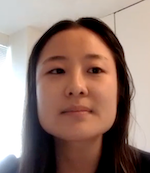Article
FPMRS patients evaluate televisits through survey-based study
Author(s):
As the COVID-19 pandemic prevails, many clinicians and patients question whether telemedicine will be the new mainstream form of health care.
In 2020, Nitya E. Abraham, MD, Christina Shin, BA, and their team of researchers conducted a cross-sectional, survey-based study of female pelvic medicine and reconstructive surgery (FPMRS) patients to assess the satisfaction and savings of televisits, using their findings to draw conclusions and predictions regarding the future of telemedicine. Abraham is an associate professor and residency director of the department of urology at Montefiore Medical Center, and Shin is a medical student at the Albert Einstein College of Medicine, Bronx, New York.
Could you discuss the background for this study?
Nitya E. Abraham, MD

Abraham: Our practice switched to telemedicine completely in 2020 during the COVID-19 pandemic, and now we realize that telemedicine is here to stay. So, we wanted to look back at all the telemedicine visits we conducted specifically in FPMRS and we wanted to look at whether patients were satisfied with their telemedicine visits, what kind of savings they experienced, whether it be financial savings or time savings, and then also what happened after those telemedicine visits and if the outcome of the visit differed based on what the patient presented with. So, based on the diagnosis or chief complaint they presented with, were certain chief complaints more amenable to telemedicine than others?
What were some of the notable findings? Were any of them surprising to you and your co-authors?
Christina Shin, BA

Shin: The most surprising thing we found is that the majority of patients with televisits were satisfied, with many saying it was easy to schedule, easy to comfortably share sensitive information with their doctor, and with the most surprising finding being 80% saying they would choose it again over an in-person visit.This makes sense given our other findings. Forty-eight percent were able to save 1 hour on travel, 29% were able to save $25 on transportation, 23% have a health condition that makes it difficult to go to in-person visits, 20% say transportation is a barrier for in-person visits, and 22% say that they or a family member were able to avoid taking time off from work by doing a televisit instead of an in-person visit.
Another part of our study was outcome-based. We found that 53% of televisits required an in-person exam or an in-person procedure being scheduled, with certain patient diagnoses and characteristics as significant predictors, like Dr Abraham said. We found that patients presenting with chief complaints of prolapse as well as those presenting as new patient visits rather than follow-ups were more likely to need a face-to-face visit. The other way to interpret these findings is that 47% of televisits didn't require another face-to-face visit being scheduled, so this suggests that some televisits could reasonably substitute an in-person visit.
Abraham: It makes sense that when a patient is presenting with prolapse, you would want to do a physical exam to look at the severity of it. Whereas other conditions, like perhaps urinary incontinence or recurrent urinary tract infections, there's a lot of patient counseling involved. Those kinds of chief complaints would be more amenable to a telemedicine visit.
How do these findings compare with previous research and/or anecdotal evidence regarding telemedicine visits with an FPMRS specialist?
Shin: One thing to keep in mind with our patient population is that the New York City comptroller executive study found that 48% of Bronx households, which is the patient population we serve, are without broadband Internet access. So, video visits are not that feasible for our patient population. In light of this, as well as our patient population being underserved, our study strongly suggests that telemedicine can become the mainstay of treatment within FPMRS even after the COVID-19 pandemic has ended. This validates the anecdotes of patients who come in for face-to-face visits, saying that they have time and cost constraints, so this is a great study of the benefits of televisits.
What is the take-home message for the practicing urologist?
Shin: Televisits are a valuable form of health care, and I think it could be better reimbursed even after the pandemic ends, especially for telephone visits. A lot of our patients actually preferred that. Fourteen percent of our total visits were video visits, so the majority were telephone visits. In addition, our research is unique in identifying patient characteristics that are less amenable or more amenable for televisits. This is important for televisit providers in terms of optimizing their practice as well as how best to balance in-person visits vs televisits. Patients with prolapse need to be better assessed on physical exam as well as new patient. They may require additional lab testing or a procedure being done, so maybe it's better to offer them an initial face-to-face visit.
Abraham: I would add that patients are happy with telemedicine visits, even if they’re telephone visits. In half of those visits, the issues are adequately addressed with telemedicine, meaning that they don't need a subsequent face-to-face visit within 30 days. This is an important form of providing health care, especially for people who have a lot of limitations in coming for in-person visits.
Is there anything else you feel our audience should know about the findings?
Shin: With the ever increasing use of telemedicine, more research could be done to better define what a successful televisit is. In our study, we used not requiring a face-to-face visit or a face-to-face procedure within 30 days as a proxy for success, but there are more nuances to televisits. I think that this will become a mainstay of treatment and more research needs to be done in identifying patient characteristics that are more amenable or ways to optimize televisits for the future, as well as developing a better understanding of patient barriers with televisits or in-person care and to address them as needed.
Abraham: I hope health care insurers will see this kind of research and whatever research comes down the pipeline to justify reimbursing telemedicine visits as an equivalent, or at least a really great option in addition to in-person visits. Reimbursement for these visits is key.
What are some tips you would give providers for conducting a successful telehealth visit?
Abraham: The most important thing is appropriate patient selection. I have patients in my practice who are wheelchair-bound, who need to take an ambulance or an ambulette to come in. So, it's a big production to come to an in-person visit. Those would be ideal patients to follow up with a telemedicine visit if it's just patient counseling that you're providing. On the other hand, patients who need to be physically examined; for example, a patient with prolapse or other physical complaint like a vaginal mass, bleeding, drainage, should be seen in person. So, I think appropriately selecting your patients will result in a successful telehealth visit.
















